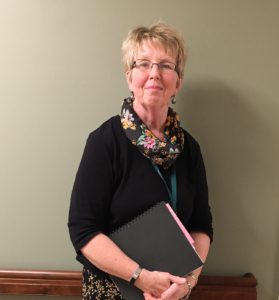The Five A’s of Alzheimer’s Disease
Alzheimer’s disease is characterized by consistent and progressive memory loss and confusion and eventually the inability to carry out simple tasks, but the subtleties of the disease can be better understood by examining the 5 A’s of Alzheimer’s.
Although there is no cure for Alzheimer’s, understanding these distinctions can help you deal with the many challenges of the disease that your loved one, and you as their caregiver, face.
challenges of the disease that your loved one, and you as their caregiver, face.
The five A’s that generally describe the main symptoms of the disease are: Amnesia, Anomia, Apraxia, Agnosia, and Aphasia.
Amnesia: The memory loss that is the most common and easily recognized sign of Alzheimer’s typically begins with short-term memory loss and progresses to the loss of long-term memory along with the inability to understand new information. Forgetting where you put the car keys is probably age-related memory loss, but putting the car keys in the freezer is most likely amnesia.
Anomia: Anomia is the struggle to find the right word for everyday objects. The person knows what the object is, a blouse for instance, but has difficulty with putting a name to it.
Apraxia: Apraxia is the loss of motor skills. Alzheimer’s affects not only a person’s cognitive abilities but also their physical abilities so that over time the activities of daily living, such as bathing and dressing, are affected. Walking and eating, along with speech, may also be affected.
Agnosia: Agnosia is the inability to understand information provided by the five senses — hearing, touch, taste, smell, and vision — such as not recognizing a loved one or being unable to interpret what a sound means, for instance a bell ringing.
Aphasia: Aphasia means difficulty in communicating through speech. It is the inability to find the right words or saying them incorrectly. For instance, they might say “watch” when they mean “bracelet,” or ask for “that thing” rather than “my hat.” Nonsense words, mixing up the sounds within a word, or repeating a sound over and over again also characterize aphasia.
With Alzheimer’s, the individual’s brain doesn’t work the way it used to, so their friends, family and caregivers can meet the challenges presented by the disease through love and patience and asking for help when needed.
Resources
Alzheimer’s Association: www.alz.
National Institute on Aging/National Institutes of Health: www.nia.nih.gov
Mary Bates, MS, CT, is a Certified Dementia Practitioner. She is the Assisted Living and Memory Care Director of Summit by Morrison, a senior living community offering independent living, assisted living, memory care, and respite care.
Through this column, Mary will share the experience, knowledge, and resources she and her team rely on, anticipating that it will be useful for anyone living with, caring for, or coming into contact with a person with dementia. Send your questions to Understanding Dementia at Summit, 56 Summit Drive, Whitefield, NH 03598 or email mary.bates@summitbymorrison.org. Mary will share information and answer as many questions as possible through this column.

